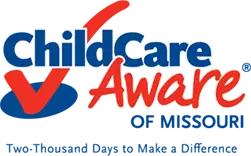How Does Consumer Education Help Parents Choose Quality Child Care?
Quality education is the cornerstone of raising children to become responsible and successful adults. As a parent, it’s crucial to provide your child with access to high-quality education. With so many options available, choosing the right educational path can be challenging. This is where consumer education plays a vital role. By equipping parents with the knowledge and tools to make informed decisions, they can identify what truly defines quality child care. Understanding these factors ensures that children are placed in an environment that nurtures their development and guarantees their safety.
Key Aspects of Consumer Education for Parents
Consumer education provides parents with the essential information they need to assess different childcare options. Understanding these key aspects is the first step toward making a well-informed decision.
Understanding Child Care Options
Parents need to be aware of the different types of child care available, such as in-home care, family daycare, and child care centers. Each option offers unique benefits and challenges, and understanding these differences can help parents select the type that best suits their child’s needs and their family’s lifestyle.
How to Evaluate Child Care Quality
Choosing the right childcare involves more than just selecting a convenient location—it’s about ensuring that the environment will nurture a child’s growth and development. To evaluate the quality of a child care setting, parents should look beyond the surface and delve into various aspects that contribute to a safe, stimulating, and supportive environment. This includes observing the interactions between staff and children, reviewing the center’s approach to education, and assessing the overall atmosphere to ensure it promotes both learning and emotional well-being.
Criteria for High-Quality Child Care
High-quality child care is characterized by a setting that prioritizes the well-being and holistic development of children. Essential features include a low child-to-staff ratio, which allows caregivers to provide individualized attention and respond promptly to each child’s needs. Staff members should not only be well-trained in early childhood education but also exhibit genuine warmth, patience, and enthusiasm for working with children. A well-rounded curriculum that encourages learning through play is crucial, as it helps children develop critical thinking, creativity, and social skills in a natural, engaging way.
Importance of Accreditation and Licensing
Accreditation and licensing serve as vital indicators of a childcare provider’s commitment to maintaining high standards of care and education. Accredited and licensed facilities are required to meet stringent criteria, which often include comprehensive safety measures, rigorous staff training, and a well-defined educational framework. These credentials provide parents with the assurance that the childcare provider adheres to industry best practices and is dedicated to offering an environment that supports the safety, development, and well-being of all children in their care.
How Can I Identify Safe and Healthy Environments in Child Care?
A safe and healthy environment is foundational to any childcare setting. Parents need to be vigilant in ensuring that the childcare providers they choose meet stringent safety and health standards.
Safety Standards and Regulations
Parents should inquire about the safety standards and regulations that a childcare facility follows. This includes checking that the environment is free of hazards, that emergency procedures are in place, and that staff are trained in first aid and CPR. A safe environment also means that the facility is secure, with controlled access and appropriate supervision at all times.
Health Protocols and Procedures
In addition to safety, health is a critical concern in child care. Parents should ensure that the facility follows strict health protocols, such as regular cleaning and sanitizing, proper handwashing practices, and policies for managing illness and preventing the spread of infections. Facilities should also have a clear policy on nutrition, providing healthy meals and snacks that meet the dietary needs of growing children.
How To Recognize Developmentally Appropriate Practices in a Child Care Setting?
Developmentally appropriate practices are essential for supporting the holistic growth of children. Parents should look for childcare settings that offer activities and curricula that are suited to their child’s age and developmental stage.
Age-Appropriate Activities and Curricula
A quality childcare setting will offer activities and curricula that are tailored to the developmental needs of the children in their care. This includes providing opportunities for physical activity, creative expression, and cognitive challenges that are appropriate for each age group. The curriculum should promote a love of learning and encourage children to explore their interests.
Importance of Play and Social Interaction
Play is a critical component of early childhood development, and high-quality childcare settings recognize its importance. Through play, children learn social skills, problem-solving, and self-regulation. Parents should look for environments where play is encouraged and where children have ample opportunities to interact with their peers in a positive and supportive setting.
Conclusion
Consumer education plays a vital role in helping parents choose quality child care. By understanding the different options available, knowing how to evaluate the quality of care, and recognizing safe, healthy, and developmentally appropriate practices, parents can make informed decisions that will benefit their child’s growth and development. Armed with this knowledge, parents can confidently select a childcare setting that meets their child’s needs and sets the foundation for a successful future.
Frequently Asked Questions
Why is consumer education important when selecting child care?
Consumer education empowers parents to make informed decisions about child care, ensuring they choose a safe, nurturing, and high-quality environment for their child.
How can parents access consumer education resources?
Parents can access consumer education resources through local government websites, childcare referral agencies, and online platforms that provide information on childcare options and quality standards.
What are some red flags to watch out for when choosing child care?
Red flags include unlicensed facilities, high staff turnover, lack of safety measures, poor communication, and negative reviews from other parents.
How can parents stay informed and updated about childcare quality?
Parents can stay informed by regularly checking updates from regulatory agencies, attending workshops, and staying connected with other parents and childcare professionals.
Are there specific programs that help parents with consumer education?
Yes, programs like Child Care Aware and local child care resource and referral agencies offer consumer education to help parents make informed choices.
How does consumer education impact a child’s development and well-being?
Consumer education helps parents select high-quality child care that supports a child’s physical, emotional, and cognitive development, leading to better overall well-being.




